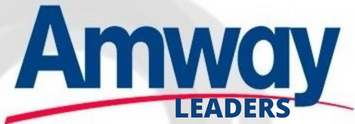I believe that the 100 minimum level need to qualify for an Amway bonus is unfair, and I will explain why in this essay. I also feel that by reducing this to 3 percent for 1-100 PV, Amway will be able to retain and grow their customer base and sales. A cash back credit card, on the other hand, may only pay you once a year, but there is no need that you make a certain amount of transactions. If I use a 1 percent cash back card, for example, if I spend $100, I will receive $1 back, and if I spend $5, I will receive 5 cents back at the end of the year. There is no requirement to make a minimum purchase in order to qualify for the cash back. A cash back card is still preferable to not having one if you have consumer debt because you can get a little amount of your expenditure back if you use it. I'm baffled as to why everyone doesn't have a cashback credit card, or at the very least one that rewards you with airline miles. However, these credit card businesses rely on consumers to incur debt in order to remain in business; otherwise, they would be forced to close their doors. If everyone paid their payments on time every month, they would all be out of pocket financially.
However, this is not the case with Amway. When you purchase a product from Amway, the company makes a reasonable profit and charges you for shipping. They make their money whether you buy one PV or one hundred PV. However, regardless of whether you purchase one PV or one hundred PV, you pay the same price to Amway (as an IBO), and Amway is required to include the IBO's bonus money in their wholesale pricing because, clearly, Amway will not run at a loss (and who would?). To become an IBO, you must pay a registration fee and devote the time, money and effort necessary to successfully market Amway products. Some transactions may be straightforward, while others may be more challenging (if you have any sales), but the IBO receives nothing unless they reach the required 100 PV. However, Amway defenders may say that while selling items can result in a retail profit (the margin comes from the consumer, not Amway), Amway products are not competitive with big stores, making it difficult to sell the products.
So why is it that Amway is unable to issue their incentive at a rate of 3 percent to lower level IBOs? I believe this is due to the fact that there would be less money available for those "further up the pyramid." Though you do not meet the required 100 PV, you will not receive a bonus, and the bonus will be awarded to the next individuals upline who fulfil the requirements, even if you worked extremely hard and sold 68 PV. You would receive no compensation from Amway for your efforts. As previously said, if you are successful in making a retail sale, you will likely get a commission, however it appears that these purchases are not as prevalent as Amway apologists would have you believe. I believe that the majority of independent business owners (IBOs) wind up selling mostly to sympathetic family and friends. Because most people do not enjoy selling, certain Amway groups instruct IBOs to "purchase from yourself." As a result, self consumption and BS such as "prosuming" are taught to IBOs.
I honestly feel that by allowing lower level IBOs to receive bonus rebates at lower levels, Amway might genuinely retain lower level IBOs because there would be a tangible monetary reward for using/and/or selling some Amway products. It's not going to happen, but why should Amway modify its ways? They make billions of dollars in sales. However, here's something to ponder. Amway made $9.5 billion in sales last year, with 3 million independent business owners (IBOs) around the world (numbers are approximate). Walmart generated about $500 billion in sales with a workforce of approximately 2 million employees (I saw this comment on another forum and thought it was significant). There is only one system that is effective, and that system is WalMart's. The de facto quota of 100 PV is unjust, as Amway's financial results clearly demonstrate.



0 comments: